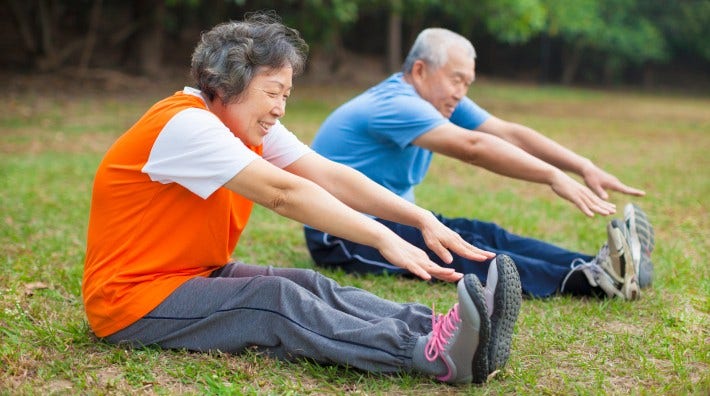How Exercise Can Lower Cancer Risk

Editor’s Note: Guidelines on diet and physical activity are updated as scientific evidence continues to evolve. Please read the most recent recommendations here.
Engaging in regular exercise is good for you for many reasons, and one of them is to lower your risk of getting cancer. According to the American Cancer Society Guidelines on Nutrition and Physical Activity for Cancer Prevention, getting more physical activity is associated with a lower risk for several types of cancer, including breast, prostate, colon, endometrium, and possibly pancreatic cancer. Physical activity can help regulate some hormones that contribute to the development of cancer and help keep the immune system healthy.
Regular exercise also helps you stay at a healthy weight, which helps regulate hormones and helps the immune system. In fact, being overweight or obese is a factor in an estimated 14% to 20% of cancer deaths in the US. Losing even a small amount of weight has health benefits and is a good place to start.
Another advantage to exercising is that when you’re exercising, you aren’t just sitting. Evidence is growing that sitting time, no matter how much exercise you get when you aren’t sitting, increases the likelihood of developing several types of cancer, as well as obesity, type 2 diabetes, and heart disease.
How much exercise do I need?
Adults should get at least 150 minutes of moderate-intensity or 75 minutes of vigorous-intensity activity each week, preferably spread throughout the week. But even lower amounts of activity can help. For people who haven’t exercised in a while, it makes sense to start slowly and build up gradually. And clear any new activity with your doctor.
Kids should get at least 1 hour of moderate- or vigorous-intensity activity each day, with vigorous-intensity activity at least 3 days each week.
Examples of moderate intensity activities include brisk walking (3 mph), dancing, leisurely bicycling, yoga, golfing, softball, doubles tennis, and general yard and garden maintenance. Examples of vigorous intensity activities include jogging, running, fast bicycling, swimming, aerobic dance, soccer, singles tennis, and basketball. All of these activities are in addition to those that are part of your usual routine at home and work – things like walking from your car to the garage, and climbing a flight of stairs.
- Reviewed by

The American Cancer Society medical and editorial content team
Our team is made up of doctors and oncology certified nurses with deep knowledge of cancer care as well as journalists, editors, and translators with extensive experience in medical writing.
American Cancer Society news stories are copyrighted material and are not intended to be used as press releases. For reprint requests, please see our Content Usage Policy.



